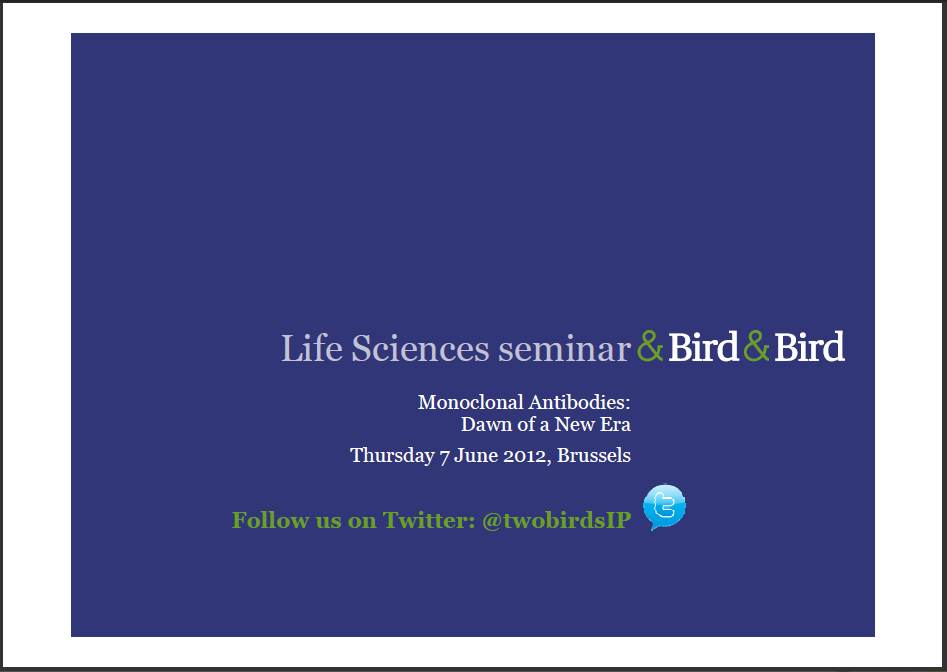EPO board of Appeal 7 juli 2011, zaak T-0007/07 (Bayer Pharma AG tegen Hexal AG)

 Vergezeld van commentaar in't kort van Erik Vollebregt, Axon advocaten.
Vergezeld van commentaar in't kort van Erik Vollebregt, Axon advocaten.
A recently published decision of the European Patent Office’s (EPO) Board of Appeal about European patents and clinical trials provides for interesting reading and for some important pointers about how to deal with clinical trials for medicinal products but also for medical devices as to not destroy novelty of a patentable invention with invalidity as result.
The clinical trial concerned involved female contraceptive pills. It was established that only the researchers had signed confidentiality agreements, but not the patients enrolled in the trial. As required the patients had been informed of the nature of the medicinal product for the purpose of informed consent but not of the exact pharmaceutical form of the active ingredient in the investigative contraceptives. Finally, not all investigative medicinal products had been returned at the end of the trial.
The Board held, in conformity with its normal strict line of interpretation of the concept of novelty (which is stricter than the US line), that the patent was invalid for lack of novelty as
is established board of appeal case law that if a single member of the public, who is not under an obligation to maintain secrecy, has the theoretical possibility to access particular information, this information is considered as being available to the public within the meaning of Article 54(2) EPC.
The respondents raised an interesting defense, arguing by reference to novelty cases involving implanted medical devices (T-0152/03 and T-0906/01) that any person involved in a clinical trial is implicitly bound by confidentiality. The Board however held that these cases concerned very different situations: the device trials concerned small groups of patients implanted with prototype investigational medical devices, whereas the drug trial at hand was a large trial in which patients were allowed to take home the medicinal products without confidentiality restrictions. Consequently, they could have shown or handed the medicinal products to anyone. The patients in the device trials referred to on the other hand could not explant their devices to hand them over to other people or have them inspected, so no novelty destroying act took place.
Some critical remarks on the facts: I think that the Board’s reasoning with respect to the implantable devices cases is only as good as the very specific facts of those cases referred to, involving balloon catheters and implantable spinal correction devices. Even if visual inspection may not immediately give away enough to destroy novelty because the device is implanted, I could conceive cases in which it would be possible for a patient with an implanted device to go to a ‘person skilled in the art’ with access to imaging devices or devices that can access the implanted device’s software to learn enough about the device to glean the inventive step claimed in the patent concerned. Also, I expect this argument to become more and more difficult to justify as imaging techniques and other ways to gain external access to the implanted device become more sophisticated.
What other lessons are there here to learn for medical devices manufacturers that provide devices for clinical trails?
During trial: if the trail procedure is not limited to an operative procedure to implant an investigational device or to use the investigational device in a procedure, and if the patient is not confined to the research facility for the duration of the trial, there is a risk that there is a novelty destroying act when the patient walks out of the trial facility with the device, whether implanted or not. This typically happens in trials where there is no need to hospitalize the patient for the duration of the trial and the patient visits a hospital a number of times as follow-up after the procedure. Post-trial: be very careful with patients walking away with the devices, whether implanted or not. ISO 14155, the GCP standard for medical devices clinical trials, imposes a duty on the investigator to provide adequate medical care to the trial subject after participation so the investigator will usually be inclined to allow a happy patient to keep the investigational device. If the device is left to the patient, whether implanted or not, and a patent has not been applied for at that moment, the manufacturer is taking a big risk with respect to novelty of the patent.
Also, remember that the novelty destroying acts cannot only take place with respect to a basic patent for a device that is tested in the trial, but also with respect to any patentable improvements that may be discovered during the trial. As manufacturer you will have spent time negotiating the ownership of possible patents for these with the investigator for the purpose of the clinical trial agreement. But that is only the first step, as these Board of Appeal decisions show. You also have to make sure that you review the IRB, informed consent form and protocol to make sure that these documents do not lead to novelty destroying acts with respect to any improvements. If you are unsure, make sure that the informed consent form includes a confidentiality clause. So, yet another step to include in the SOP for review of clinical investigation agreements.
 Een bijdrage van Wouter Pors, Bird & Bird.
Een bijdrage van Wouter Pors, Bird & Bird.
 Beroep tegen de weigering een handelsvergunning te verstrekken voor het product Oralgen Mijten ongegrond verklaard nu uit studies niet is gebleken dat Oralgen Mijten werkzaam is (zie beslissing op bezwaar onder 2b.
Beroep tegen de weigering een handelsvergunning te verstrekken voor het product Oralgen Mijten ongegrond verklaard nu uit studies niet is gebleken dat Oralgen Mijten werkzaam is (zie beslissing op bezwaar onder 2b. 
 Vergezeld van commentaar in't kort van Erik Vollebregt,
Vergezeld van commentaar in't kort van Erik Vollebregt, 














